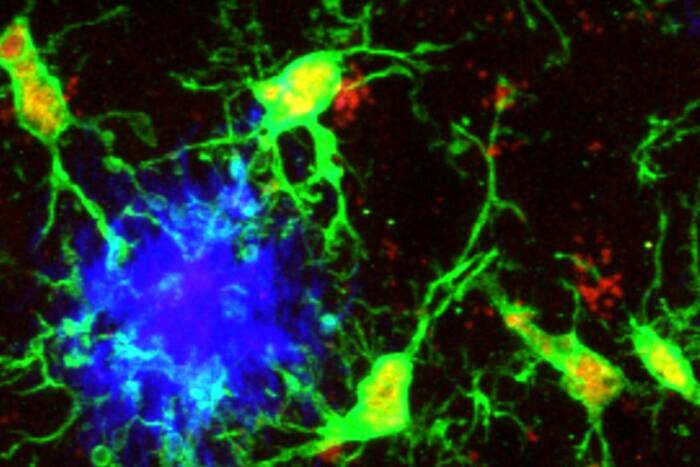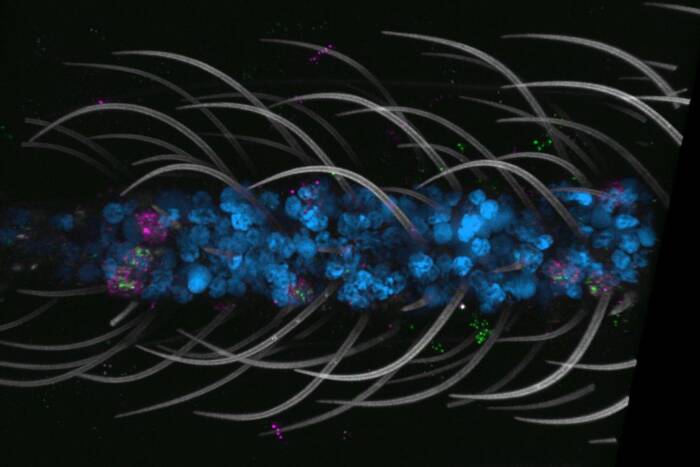McKinney to head new lab at EPFL
by TALLEY HENNING BROWN
John McKinney, associate professor and head of Rockefeller’s Laboratory of Infection Biology, has accepted a new appointment at the Ecole Polytechnique Fédérale de Lausanne (EPFL), in Switzerland, as a professor in the recently established Global Health Institute within EPFL’s School of Life Sciences. He is currently dividing his time between New York and Europe, setting up his new laboratory and teaching classes at EPFL, and intends to move permanently to Switzerland by next July.
Dr. McKinney received his Ph.D. from Rockefeller in 1994 for his studies on eukaryotic cell cycle regulation in the laboratories of Frederick Cross and Nathaniel Heintz. Following a postdoc in the laboratory of William Jacobs at the Albert Einstein College of Medicine, he returned to Rockefeller as assistant professor in 1999 and became associate professor in 2004.
Dr. McKinney’s research focuses on the tuberculosis bacterium, an unusual pathogen that may persist indefinitely in a dormant state in the body of its host only to reawaken when the host immune system is weakened. Nearly two billion people worldwide have latent TB infections, which are refractory to therapy with current TB drugs. Having discovered mechanisms within the host and the bacterium that impact the persistence of the infection, Dr. McKinney’s group seeks to elucidate these mechanisms with an eye toward developing more effective therapies.
For the last two years, Dr. McKinney has collaborated with Stanislas Leibler, head of the Laboratory of Living Matter and one of Rockefeller’s few physicists, to apply technologies and approaches from engineering and physics to the study of infectious diseases. Dr. McKinney’s work at EPFL, which contacted him last spring, will continue and extend along the same lines of interdisciplinary investigation.
EPFL established the Global Health Institute early last year specifically for the study of infectious diseases and infection immunology. “EPFL has traditionally focused on the physical sciences, mathematics, information technology and engineering. The School of Life Sciences was launched only in 2001,” says Dr. McKinney. “The vision of EPFL’s leadership is unusual inasmuch as they are fully integrating biology with the so-called hard sciences, and they have created a number of institutional mechanisms to promote this integration.”
The Global Health Institute will place special emphasis on neglected communicable diseases, those illnesses that have been virtually eradicated in the developed world but still thrive in poor countries and for which current treatments are inadequate or nonexistent. “Pharmaceutical companies are reluctant to invest in an area unless they see a billion-dollar annual market coming out of it. They don’t expect that kind of market for diseases like TB and malaria, because these diseases prey overwhelmingly on people in developing countries,” says Dr. McKinney. “This assumption might well be wrong, based on recent economic analyses by nongovernmental organizations, but in any event those of us in academia who work on these diseases have a real opportunity to make a difference, and that’s an exciting challenge.”
Dr. McKinney’s collaboration with the Leibler laboratory gained new momentum this year thanks to a grant from the Bill and Melinda Gates Foundation. “With the support from the Gates Foundation, we’ve accomplished more in the last six months than we had in the previous two years. Within the NIH funding system it’s difficult to jumpstart new projects. An attractive feature at EPFL is the exceptional hard money support provided by the institution, which we can apply to any aspect of our research. This will provide extraordinary intellectual freedom compared to what the U.S. funding climate currently supports,” says Dr. McKinney.
“John’s departure will be a real loss to this campus, but I understand his desire to seize what he feels is a once-in-a-lifetime opportunity,” says President Paul Nurse.
Note: This story differs slightly from the printed version. Corrections have been incorporated.


